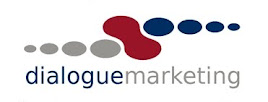
Recently I was engaged in putting a client through the paces of learning how to effectively use email to enhance his efforts at prospecting. The efforts included using an automated Dialogue Marketing solution to contact and filter his many prospects. What emerges out of the bottom (akin to a filter) should be qualified leads.
Source: The Direct Marketing Center
How do you start your letter, your brochure, your website or, for that matter, any other direct response piece?
Do you tell the prospect immediately what it is you’re trying to sell? Do you warm him up so he can understand why he needs your product or service? Do you get right into the sales pitch?
The direction of the first paragraph of your direct response piece depends on the theme you’ve chosen. That theme will dictate whether your lead paragraph will follow a particular creative approach or focus on your offer.
Once your lead paragraph is in harmony with your theme, the focus should shift to your warm-up. An ineffective warm-up will cripple a direct mail letter more than any other factor, resulting in a mediocre or losing letter.
Let me give you some illustrations...
In the following, you must read two or three paragraphs before you really get to the heart of what the piece is all about. These paragraphs cause tremendous drop-off in readership and develop a feeling of not just boredom, but confusion as to what the writer is trying to sell.
“As a homeowner, you know how maintenance costs are climbing every day. And in these days of tighter budgets, we don’t need to tell you that needed home maintenance is too often ignored in terms of priority dollars.”
“Despite international treaties designed to stop the use of drift nets in commercial tuna fishing, which results in the slaughter of many hundreds of dolphins each year, violations are still taking place. For an independent organization like ours to monitor and deter the use of drift nets, operation costs can be staggering.”
The three-paragraph rule in direct response states simply that with most sales pieces, you can cut off the first three paragraphs and start with the fourth.
Though this rule is a bit arbitrary, it tends to prove true when reviewing drafts from the majority of copywriters. The copywriter will warm up to the subject and his key, but the critical lead paragraph is buried further down in the fourth or fifth paragraph.
A great sales piece will get to the point right away. Your objective is to demand and attract the interest of the reader. It is not to set the groundwork for understanding the piece; it’s to generate immediate interest in the theme that you have chosen.A great sales piece will get to the point right away. Your objective is to generate immediate interest.
Also, the beginning paragraph should be in the first person. A quick way to destroy a letter or other direct response piece is to talk in the third person or have a lot of “we’s” in the copy. To start a letter with “we” can cripple your response.
Here’s an example of a poorly constructed start:
“We are living in very precarious times. Bankruptcies and foreclosures are at an all-time high. Businesses are being liquidated in record numbers. And homelessness is on the increase. As a nation, we must come together to reverse these dangerous trends, but we will need your backing if we are to succeed.”
Conversely, beginning a letter with the word “you” immediately involves the prospect in the copy. A “you”-oriented letter speaks directly to the needs of the prospect.
Here in a nutshell are a few of the rules to follow in creating your first paragraph:
- Make it dramatic, interesting and directed to the right target audience. The focus is on the reader’s self-interest.
- Keep your paragraph short.
- Keep your sentences short.
- Keep your words short.
- Use “you” to involve the reader.
- Make your message come from one person, on a very personal basis, with the intent of building a one-on-one readership throughout the piece.
- In evaluating any sales letter, one of the first things you should do is look at the lead paragraph. Does it match the style and flavor of the six points listed above?
Below are a few first paragraphs I have recently used for my clients
Take a look at them to see how we have applied the rules:
Imagine raking in 58.84% average returns over 3 years when the S&P 500 is pulling 18.01%. Subscribers to Motley Fool Stock Advisor have done exactly that.
Malpractice premiums are outrageous! But at least they protect you from today’s out-of-control lawsuits, right? Not necessarily.
The fact is, your cost of living in California is a staggering 30% higher than other western states due to some of the heaviest taxation and regulation in the country.
Twenty-three years ago, I took a trip that I have regretted for life.
There is no dogmatic formula to a lead-in paragraph, but there is a similarity in style from the nation’s great copywriters. Your letters will produce better responses if you follow, rather than break, the rules.
Author: Craig Huey



No comments:
Post a Comment